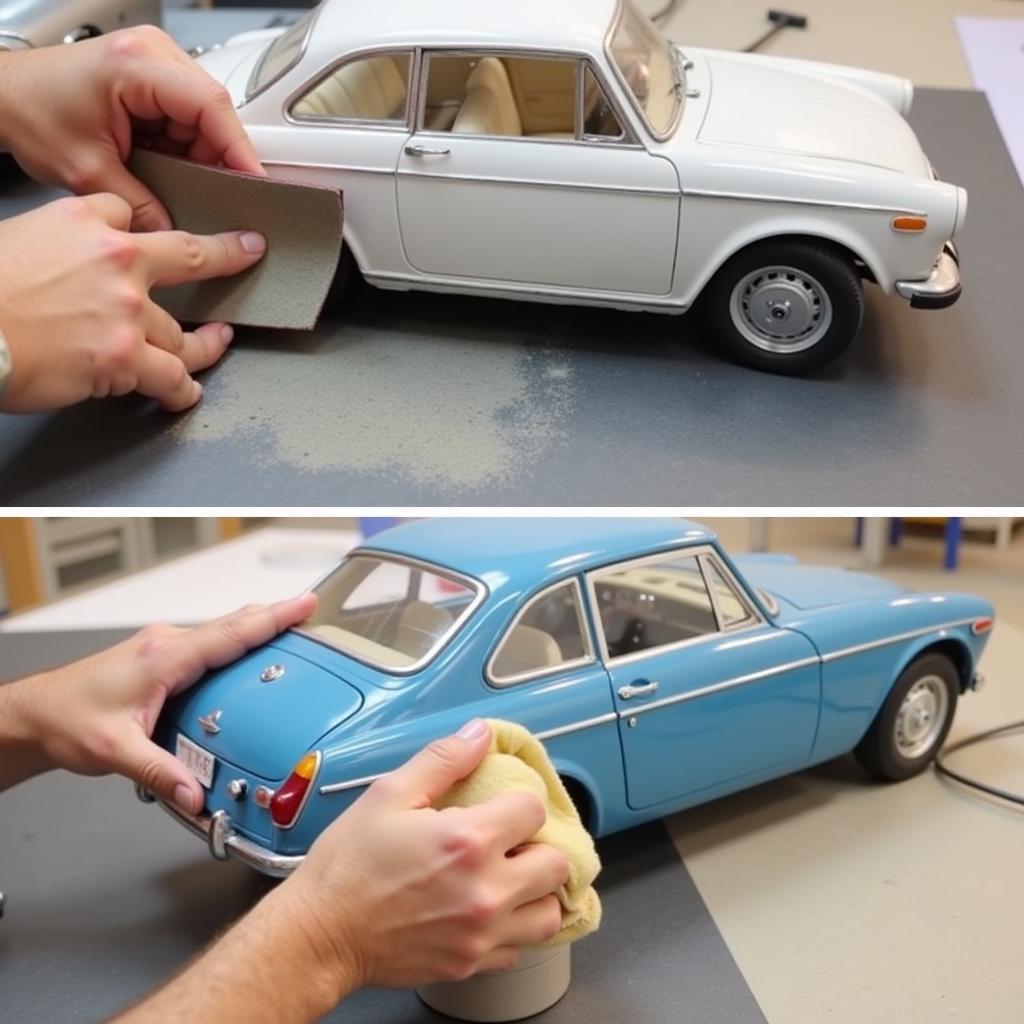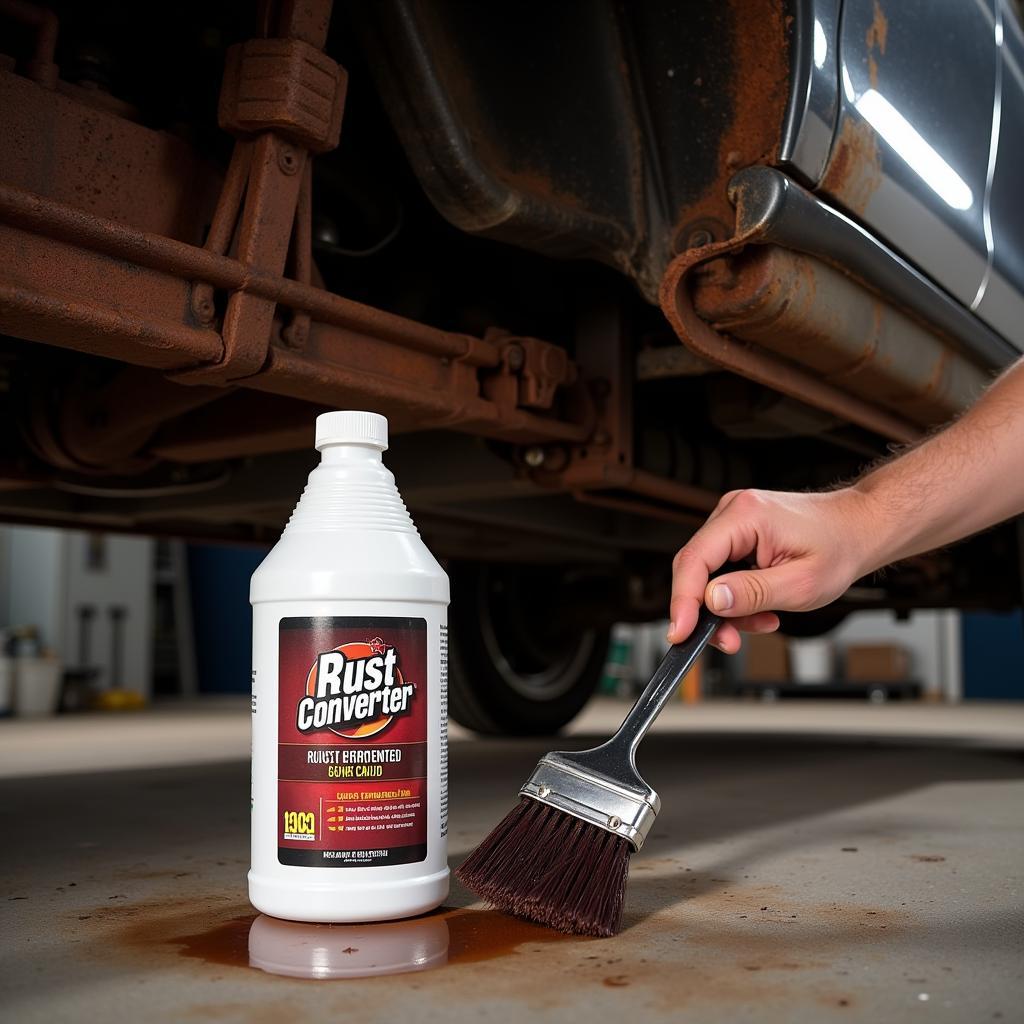Model car paint problems can be a real headache, whether you’re a seasoned hobbyist or just starting out. From orange peel to chipping and everything in between, understanding the common issues and their solutions can save you time, money, and frustration. This guide will delve into the most frequent model car paint problems and provide practical solutions to achieve that flawless finish you’ve been dreaming of.
Common Model Car Paint Problems: A Closer Look
Model car painting is a delicate process, and various factors can lead to imperfections. Let’s explore some of the most prevalent problems:
Orange Peel
Orange peel, aptly named for its resemblance to a citrus fruit’s skin, is a textured surface caused by uneven drying of the paint. This can be due to incorrect air pressure, improper thinning, or environmental factors like humidity.
Fish Eyes
These small craters in the paint are typically caused by contaminants like silicone or grease on the model’s surface. Even a tiny fingerprint can lead to fish eyes.
Chipping and Flaking
This occurs when the paint doesn’t adhere properly to the plastic. Inadequate surface preparation, incorrect primer, or incompatible paint layers can contribute to chipping and flaking.
Runs and Sags
Applying too much paint in one go or working in excessively humid conditions can result in unsightly runs and sags in the finish.
Blushing
A milky or hazy appearance on the paint surface, often caused by moisture trapped beneath the paint layer. This can occur in humid environments or when using fast-drying thinners.
Solutions to Your Model Car Paint Troubles
Now that we’ve identified the common culprits, let’s discuss how to tackle them:
Fixing Orange Peel
- Wet sanding: Carefully wet sand the affected area with fine-grit sandpaper to smooth out the texture.
- Polishing: Use a polishing compound to further refine the surface and restore shine.
- Adjusting air pressure: Ensure your airbrush is set to the correct pressure for the paint being used.
- Thinning the paint: Proper thinning ensures even application and reduces orange peel.
Eliminating Fish Eyes
- Thorough cleaning: Clean the model thoroughly with a degreaser designed for plastic models.
- Tack cloth: Use a tack cloth to remove any remaining dust or debris before painting.
- Fish eye eliminator: Add a few drops of fish eye eliminator to the paint to prevent future occurrences.
Preventing Chipping and Flaking
- Proper priming: Use a primer specifically designed for plastic models to promote adhesion.
- Compatible paint layers: Ensure all paint layers are compatible with each other.
- Gentle handling: Handle the model carefully after painting to avoid chipping.
 Fixing paint problems on a model car by sanding and polishing.
Fixing paint problems on a model car by sanding and polishing.
Addressing Runs and Sags
- Careful application: Apply thin coats of paint, allowing each coat to dry before applying the next.
- Controlled environment: Maintain a stable temperature and humidity level during the painting process.
- Sanding and repainting: If runs and sags occur, allow the paint to dry completely, sand down the affected area, and repaint.
Remedying Blushing
- Warm environment: Paint in a warm, dry environment to prevent moisture trapping.
- Slower drying thinner: Use a slower-drying thinner in humid conditions.
- Clear coat: Applying a clear coat can sometimes help to seal in the moisture and reduce blushing.
Expert Insights on Model Car Painting
John Smith, a renowned model car builder with over 20 years of experience, shares his insights: “Patience is key in model car painting. Taking the time to properly prepare the surface and apply thin, even coats will yield far better results than rushing the process.”
He further adds, “Don’t be afraid to experiment with different techniques and products. What works for one person may not work for another, so finding what suits you best is crucial.”
Conclusion
Model car paint problems, while frustrating, are often solvable with the right knowledge and techniques. By understanding the causes and applying the solutions outlined in this guide, you can achieve a professional-looking finish on your model cars. Remember, practice makes perfect, so don’t be discouraged by initial setbacks. For personalized support and assistance with your model car painting projects, feel free to connect with us at AutoTipPro. Call us at +1 (641) 206-8880 or visit our office at 500 N St Mary’s St, San Antonio, TX 78205, United States. We are here to help!





Leave a Reply